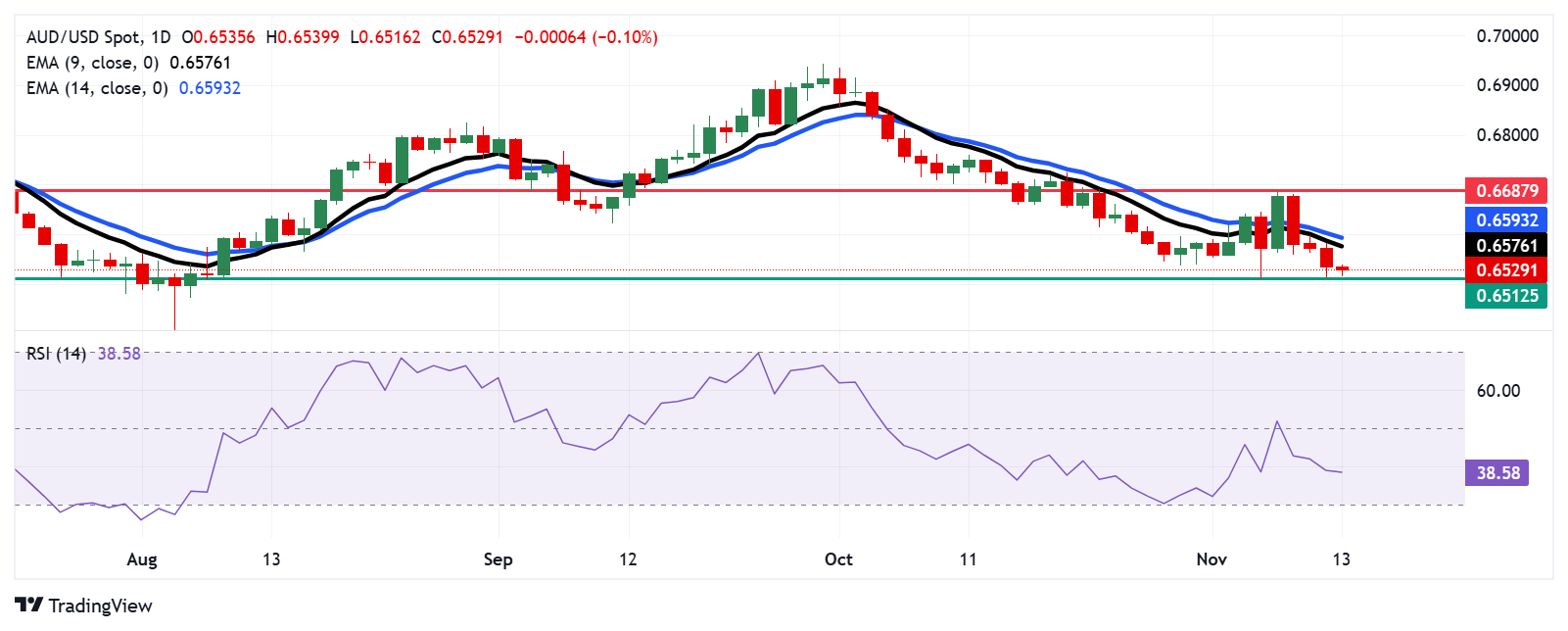Australian Dollar Recovers Losses As PM Albanese Shares About Trade Discussion With Trump
Image Source: Unsplash
- The Australian Dollar appreciates as PM Albanese has shared about a trade discussion with Trump last week.
- Australia's Wage Price Index increased by 3.5% YoY in Q3, down from a 4.1% rise in Q2.
- The US Consumer Price Index data release will be eyed in the North American session.
The Australian Dollar (AUD) attempts to halt its losing streak against the US Dollar (USD) on Wednesday following a radio interview with Australia's Prime Minister Anthony Albanese. Albanese shared that he discussed trade with US President-elect Donald Trump during a phone call last week. Albanese informed Trump that the United States holds a trade surplus with Australia and emphasized that it is in Washington's best interest to "trade fairly" with its ally.
The AUD/USD pair remained subdued after the release of the weaker-than-expected Australia’s Wage Price Index data on Wednesday. Additionally, the downward movement of the pair is bolstered by the optimism around the Trump trades.
The Reserve Bank of Australia (RBA) Governor Michele Bullock reaffirmed a hawkish stance after the interest rate hold last week, emphasizing the need for restrictive monetary policy amid ongoing inflation risks and a strong labor market. The hawkish sentiment surrounding the RBA might have restrained the downside of the Australian Dollar.
The US Dollar strengthened as analysts noted that if Trump’s fiscal policies are enacted, they could increase investment, spending, and labor demand, potentially heightening inflation risks. This scenario might lead the Federal Reserve (Fed) to consider a more restrictive monetary policy stance.
Traders are now focused on the upcoming US inflation data release on Wednesday for further guidance on future US policy. The headline Consumer Price Index (CPI) is expected to show a 2.6% year-over-year increase for October, with the core CPI anticipated to rise by 3.3%.
Australian Dollar receives downward pressure from Trump's potential tariff on China imports
- Australia's Wage Price Index rose by 3.5% year-over-year in the third quarter, down from a 4.1% increase in the previous quarter and below expectations of a 3.6% gain. This marks the slowest wage growth since Q4 2022.
- Minneapolis Fed President Neel Kashkari stated on Tuesday that the central bank remains confident in its prolonged fight against transitory inflation but noted that it’s too early to declare complete victory. Kashkari also mentioned that the Fed would hold off on modeling the economic impact of Trump’s policies until there is more clarity on their specifics.
- Australia's Westpac Consumer Confidence index rose by 5.3% to reach 94.6 points in November, marking its second consecutive month of improvement and the highest level in two and a half years. However, the index has remained below 100 for nearly three years, reflecting that pessimists still outnumber optimists.
- Matthew Hassan, Senior Economist at Westpac, noted "Consumers are feeling less pressure on their family finances, are no longer worried about further interest rate rises, and are increasingly confident in the economic outlook."
- Bloomberg News reported early Tuesday that Chinese regulators are planning to cut taxes on home purchases. According to the report, authorities are working on a proposal that would allow major cities to lower the deed tax for buyers to as low as 1%, down from the current maximum rate of 3%.
- China's latest stimulus measures fell short of investor expectations, further dampening demand prospects for Australia’s largest trading partner and weighing on the Australian Dollar. China announced a 10 trillion Yuan debt package on Friday designed to alleviate local government financing pressures and support struggling economic growth. However, the package stopped short of implementing direct economic stimulus measures.
- Morgan Stanley divides the Trump administration's macroeconomic policies into three key areas: tariffs, immigration, and fiscal measures. The report predicts that tariff policies will be prioritized, with an anticipated immediate imposition of 10% tariffs globally and 60% tariffs specifically on China.
- On Thursday, Federal Reserve Chair Jerome Powell stated he doesn’t anticipate Trump’s potential return to the White House impacting the Fed’s near-term policy decisions. “We don’t guess, speculate, and we don’t assume what future government policy choices will be,” Powell noted after the bank decided to lower interest rates by 25 basis points to a range of 4.50%-4.75%, as expected.
Australian Dollar falls toward three-month lows near 0.6500
AUD/USD trades near 0.6530 on Wednesday. The daily chart analysis indicates short-term downward pressure, as the pair stays below the nine-day Exponential Moving Average (EMA). Additionally, the 14-day Relative Strength Index (RSI) remains under the 50 level, further supporting a bearish outlook.
In terms of support, the AUD/USD pair is testing its three-month low of 0.6512, reached on November 6, with further psychological support at 0.6500.
On the upside, resistance appears at the nine-day EMA at 0.6576, followed by the 14-day EMA at 0.6593. A break above these EMAs could propel the AUD/USD pair toward its three-week high of 0.6687, with the next psychological target at 0.6700.
AUD/USD: Daily Chart
More By This Author:
USD/CAD Rises To Near 1.3950 Due To Trump’s Proposed Fiscal Policies, Lower Oil PricesSilver Price Forecast: XAG/USD Depreciates Toward $30.50 Due To Risk-On Sentiment
Australian Dollar Extends Losses Due To Likelihood Of Potential Tariffs From Trump
Information on these pages contains forward-looking statements that involve risks and uncertainties. Markets and instruments profiled on this page are for informational purposes only and should not ...
more




